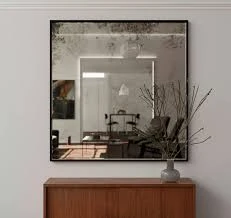

Understanding the Price of 6mm Tinted Glass Factors and Market Trends
The construction and design industries have witnessed a significant rise in the demand for tinted glass, particularly the 6mm variant, known for its aesthetic appeal and functional properties. As architects and builders increasingly favor tinted glass for both residential and commercial projects, understanding its pricing dynamics is crucial for stakeholders in these markets. This article delves into the factors influencing the price of 6mm tinted glass and the current market trends.
What is 6mm Tinted Glass?
6mm tinted glass is a type of float glass that has been treated with a color during the manufacturing process. This tint not only enhances the visual appeal of a building but also provides practical benefits such as reducing glare, improving energy efficiency by minimizing heat gain from sunlight, and offering a degree of privacy. The thickness of 6mm is often preferred for various applications, including windows, facades, and glass doors.
Factors Affecting the Price of 6mm Tinted Glass
1. Raw Material Costs The primary constituent of glass is silica, along with other materials, such as soda ash and limestone. Fluctuations in the prices of these raw materials can have a direct impact on the cost of producing tinted glass. For instance, global supply chain disruptions or increased mining costs can lead to higher prices for manufacturers which, in turn, get passed on to consumers.
2. Manufacturing Processes The production of tinted glass involves specific manufacturing techniques, including the application of tints and coatings. Advanced technologies like low-E (low emissivity) coating can further enhance performance but also increase production costs. Manufacturers who invest in modern equipment and quality control processes may charge a premium for their products.
3. Market Demand The growing trend towards sustainable building practices has led to a rise in demand for tinted glass, particularly in energy-efficient buildings. As more architects and builders seek materials that contribute to LEED certifications or other green building standards, the demand for tinted glass steadily increases, influencing its market price.
4. Import and Export Dynamics The global nature of the glass trade means that international tariffs, shipping costs, and local regulations can impact prices. For example, if a country imposes tariffs on imported glass products, the increased cost will often be reflected in local market prices.

5. Customization and Specialty Products The availability of custom sizes, colors, and additional features such as UV protection can also affect the pricing of tinted glass. Custom products typically command higher prices due to the additional processing time and materials required.
6. Supplier and Brand Reputation Well-established brands that have built a reputation for quality and reliability may price their tinted glass higher than lesser-known suppliers. Customers often prioritize quality, warranty, and service, which can justify the premium pricing.
Current Market Trends
In recent years, the market for tinted glass has been on the rise, driven by various architectural trends that prioritize aesthetics and functionality. Some notable trends include
- Sustainability As mentioned earlier, the demand for energy-efficient building materials has surged. Tinted glass can play a significant role in reducing energy consumption, making it a preferred choice among eco-conscious consumers. - Technological Advancements Innovations in glass technology, including self-cleaning and smart glass options, are becoming more popular. These advancements can command higher prices but offer additional benefits that are appealing to modern consumers.
- Increasing Urbanization Urbanization has led to a rise in high-rise buildings and commercial spaces that utilize tinted glass for its sleek look and performance benefits. This trend contributes to an increased demand and, consequently, influences the pricing landscape.
- Global Supply Chain Challenges The COVID-19 pandemic and other geopolitical factors have highlighted vulnerabilities in global supply chains. As companies adapt to these challenges, prices may be affected due to sourcing delays and increased transportation costs.
Conclusion
The price of 6mm tinted glass is influenced by a multitude of factors, ranging from raw material costs to market demand and technological innovations. As the construction and design industries continue to evolve, understanding these dynamics will be essential for making informed purchasing decisions. As consumers become increasingly aware of the benefits of tinted glass, both in terms of aesthetic and functional properties, its prevalence in the market is likely to grow, along with its price adjustments. For anyone involved in the construction or design fields, staying abreast of these trends is vital to leveraging the advantages offered by this versatile material.